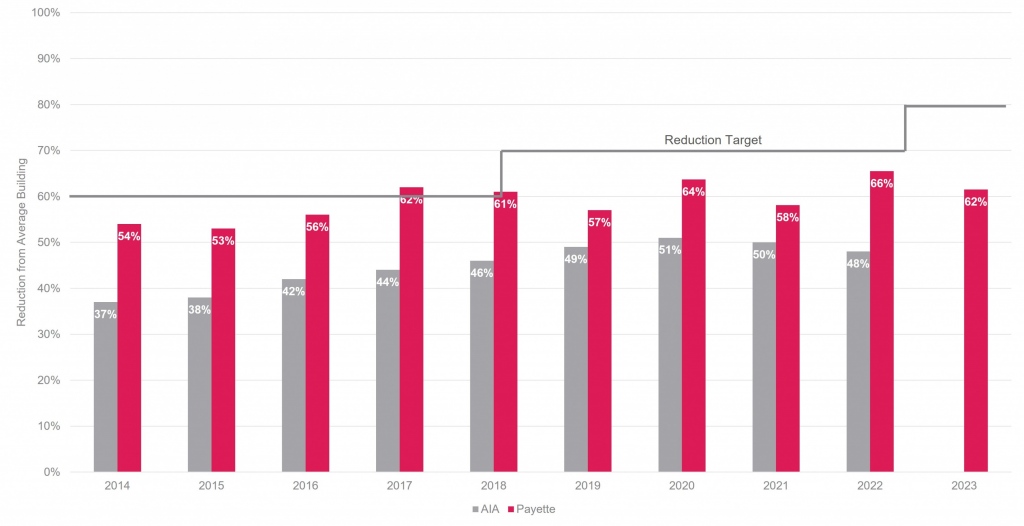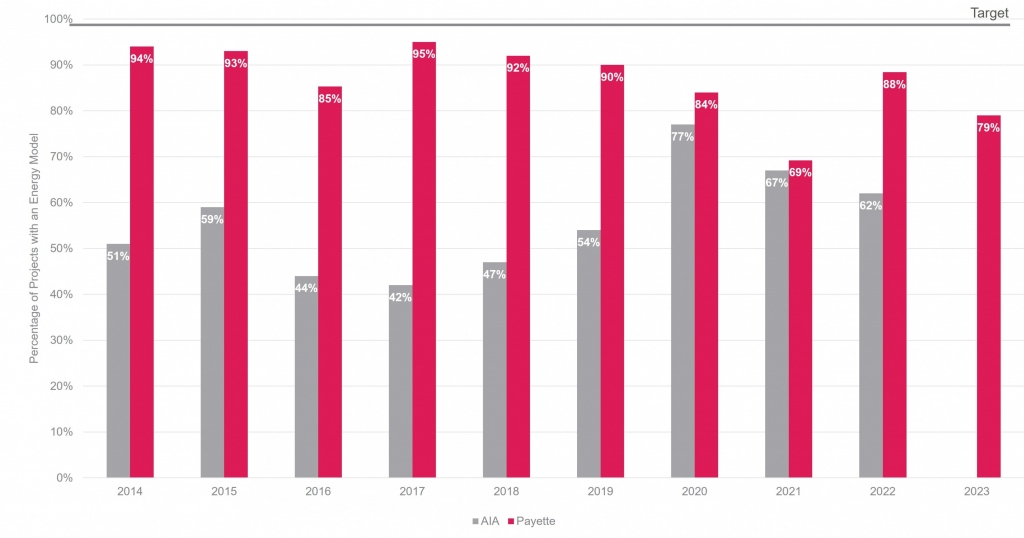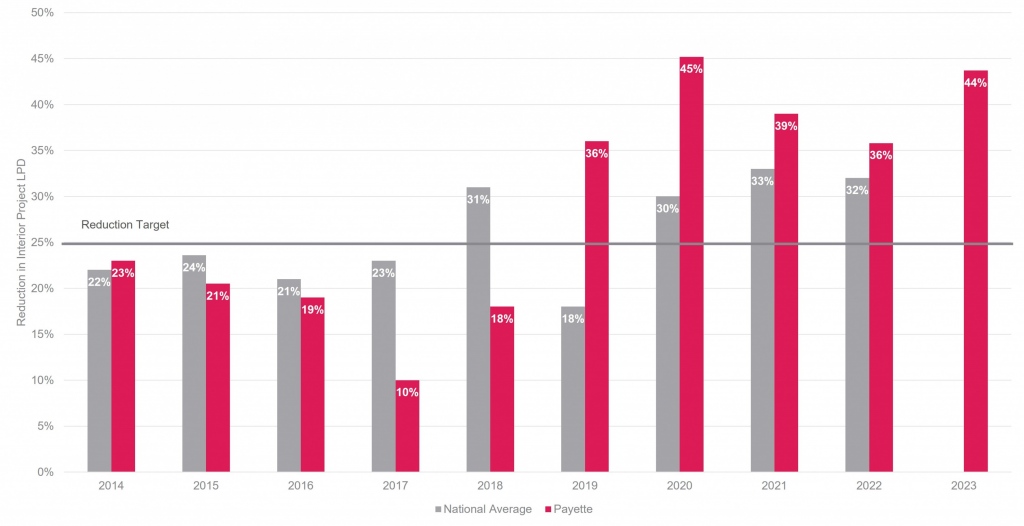PAYETTE has been part of the 2030 Commitment since January 2011, with the collective goal of designing carbon-neutral buildings by 2030. The community has grown significantly since then, demonstrating an increase in overall commitment to sustainability and how a shared set of energy benchmarks and targets can accelerate development.
According to the recent AIA COTE 2030 By the Numbers report, in 2022, 428 firms reported slightly more than 3.8 billion gross square footage across 23,276 projects and 107 countries. The 2022 report shows an overall average reduction of 48% in predicted energy usage intensity (pEUI) across whole-building projects and an average 32% reduction in predicted lighting power density (pLPD) within interior-only projects and almost 4,000 projects reported embodied carbon data. Overall, 41.8 million metric tons of CO2 emissions were avoided relative to 2030 baseline-equivalent buildings.
This year, PAYETTE reported 12 whole buildings and 12 interior-only projects with a total gross square footage of 3.2 million, and 4 projects reported embodied carbon data.
REDUCTION IN ENERGY USE INTENSITY (EUI)
This year, we are at an average 62% reduction in predicted EUI. Two of our projects – FM Global’s Office/R&D Research Building and UMass Amherst’s Sustainable Engineering Laboratories – are at 78% reduction from the baselines and almost meeting the current target of 80% reduction. We should remember that energy targets will increase to a 90% reduction from 2025; considering most of our current and future projects will be occupied after that, we should work towards that goal moving forward.

PROJECTS WITH ENERGY MODELS
Energy modeling is critical for accurate and efficient energy usage reductions. According to the AIA 2030 report, whole-building projects with an energy model achieved a better average pEUI reduction of 49% compared to projects without an energy model, which showed an average pEUI reduction of 46%. This year, an average of 79%, based on gross square footage, of PAYETTE’s whole-building projects have an energy model.

REDUCTION IN LIGHTING POWER DENSITY (LPD)
PAYETTE’s interior projects have shown a 44% reduction in lighting power density this year, a tremendous improvement over our 2022 performance of 32% savings. Approximately 96% of PAYETTE’s projects meet the recommended targets of a 25% reduction from ASHRAE 90.1-2007 baselines, while 72% of all the interior projects reported to AIA meet the targets. Some of our projects, like FM Global 1 Tech-Way, Northeastern EXP, and Tulane University Hutchinson renovations, have shown a significant reduction of more than 50 % in LPD.

The 2022 Summary of the 2030 By the Numbers report tracks trends like electrification, renewable energy and embodied carbon data across all reported projects. Some of the key takeaways are:
• A total of 707 all-electric buildings were reported, with fuel sources showing a significant trend in moving towards electrification.
• Regarding renewable energy growth, 346 net zero projects have been reported. 1,718 reported projects include renewable energy, of which 83% of projects used solar photovoltaics, and 77% of the projects used on-site solar photovoltaics.
• Embodied carbon data was reported for 3,818 projects, of which 82% were new construction, 18% were significant renovations and only 3% were interior projects.
The core of climate mitigation is reaching carbon neutrality by 2030 to avoid catastrophic impacts on any community worldwide. Implementing energy and resource-conscious design strategies can help improve both operational and embodied carbon emission trajectories over the coming years.
Resource: AIA 2030 Commitment Numbers


